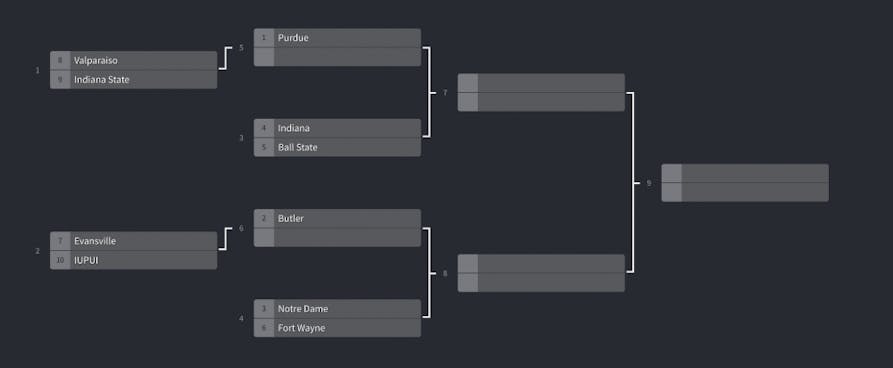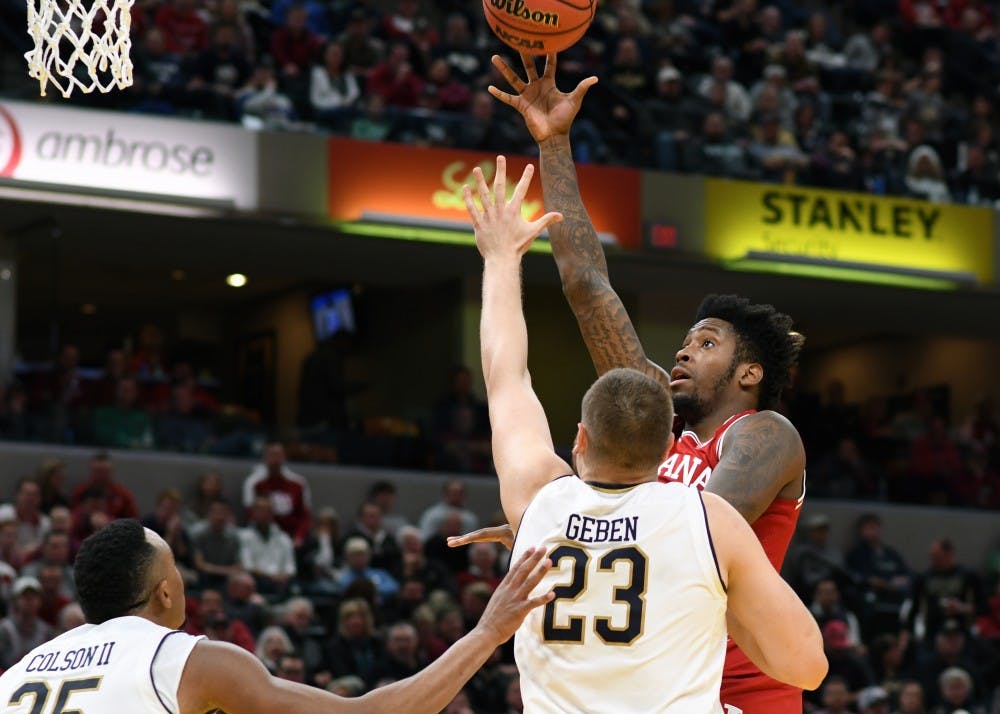The state of Indiana and basketball have been synonymous for decades.
Between the state's longtime affinity for high school basketball, the success of its collegiate programs and the Indiana Pacers in the professional ranks, there has been much ado about the game's place in the state's culture, with articles, books, movies and even college classes devoted to the subject.
In the early 2010s, the Crossroads Classic was created as an event that could showcase the four most popular collegiate basketball programs in the state by bringing the Butler, IU, Notre Dame and Purdue basketball teams under the same roof on the same day at Bankers Life Fieldhouse in Indianapolis. After seven editions of the event, the honeymoon phase of its existence is over and it has acquired some critics.
If the Crossroads Classic wants to survive, it may have to adapt, and there’s one way in particular it could do just that — by becoming a true showcase for collegiate basketball in the state of Indiana.
The Crossroads Classic has included only four teams in its history, despite there being 10 NCAA Division 1 teams in the state in IU, Purdue, Notre Dame, Butler, IUPUI, Ball State, Evansville, Indiana State, Fort Wayne and Valparaiso. It’s tough to say the event showcases college basketball in the state when less than half of the teams in said state are in the event.
So, why not add those mid-majors to the Crossroads Classic? They could bring to the event what mid-major teams typically bring to the NCAA Tournament — madness.
Whether it’s UMBC taking down one-seed Virginia, George Mason making a run to the Final Four, Butler reaching the national title game or countless other occurrences, mid-major teams have provided some of the greatest moments in college basketball history.
They could potentially do something similar for the Crossroads Classic.
If these teams were to be added, two questions would presumably come up — “How would this fit into teams’ schedules?” and “Could the mid-major teams compete?”
On the first of those two conundrums, the answer could already be right in front of us — for the most part, these teams already play each other. Out of the 10 schools, just two of them didn't have an Indiana mid-major team on its schedule last season.
Every other school played at least one, if not multiple Indiana mid-major opponents on the season. The teams could more than likely take games they were already going to play and make them a part of the Crossroads Classic.
In this proposed change to the event’s format, each team would be seeded based on its record the previous season, with the team with the best record as the one-seed and so on. The bottom four seeds would compete in play-in games, narrowing the field to eight teams. Another option would be to seed IU, Notre Dame, Purdue and Butler as the top four by record, with the mid-majors behind them in the same fashion.
The preferred method of seeding depends partially on the location of these games. The play-in games would be hosted by the higher seed, but after that there are a couple of options.
The first of which is to let the first round of the tournament be hosted by the higher seed. If the four big schools are automatically seeded as the top four, they would each get one home game, which could be attractive to them. After the first round, the tournament would move to Bankers Life Fieldhouse for the semifinals and the championship game.
The other option would be to play each game after the play-ins at Bankers Life Fieldhouse over the course of two days. With this location option, the manner of seeding, either the big four as the top four seeds or all 10 teams seeded by record, wouldn’t matter as much as there would be no true home or road games after the play-in round.
If the Crossroads Classic were to change to this format, seeding the four major teams as the top four seeds, here’s what the bracket would look like for the 2018 edition:

With this potential format change, there are obviously more games that could potentially be sold to networks interested in broadcasting the event, more tickets and concessions sold and more potential intrigue around the event.
It seems like there was little interest when Purdue and Indiana State played in October 2017, as there were just under 5,200 fans in attendance at Mackey Arena. That’s not a particularly good number for a team that has averaged over double that in recent years. If you put something on the line in that game, say a trip to Bankers Life Fieldhouse for the semifinals of the Crossroads Classic, that could potentially bring in more fans and draw more interest.
Now that we’ve covered how the addition of six teams to the event could occur, the next question is can those teams compete?
The short answer — yes they can.
During the 2017-18 season, IU fans witnessed a pair of shocking upsets to in-state mid-major schools in its home arena as the Hoosiers lost to Fort Wayne and Indiana State. On top of those losses, Ball State traveled to South Bend and defeated the Fighting Irish on a late three-pointer.
In 2016, Indiana State took down a top 25-ranked Butler team at the Hulman Center in Terre Haute, Indiana.
The smaller schools won’t be favored to win games against the likes of IU, Purdue, Notre Dame and Butler, but they have certainly shown the ability to compete with them in recent years and if even one of them makes it to the late stages of the expanded Crossroads Classic, it could be quite the ride.
With complaints about the Crossroads Classic beginning to rise, it might just be time for a new version of the event, one that has the ability to capture the state of Indiana’s passion for the game of basketball, no matter what part of the state you’re in.
From Evansville to South Bend, from Terre Haute to Fort Wayne and everywhere in between, there are basketball fans that deserve to see what the Crossroads Classic could be — a true showcase for major (and mid-major) collegiate basketball in the state of Indiana.




